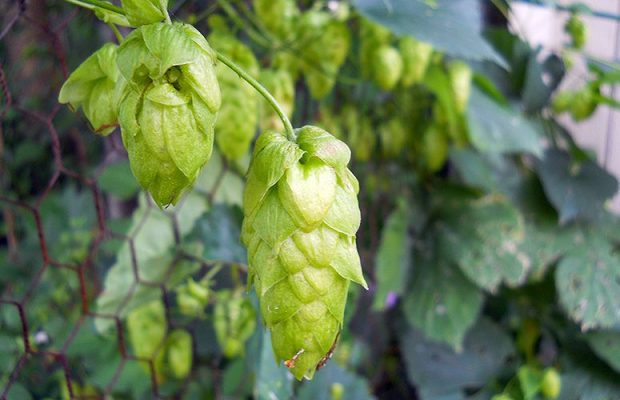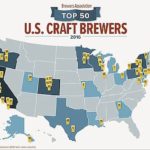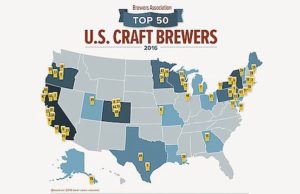How the Craft Beer Boom Is Changing Your Local Brew

A dedicated and ever-growing base of beer lovers has resulted in a craft beer boom, according to the Brewers Association, a not-for-profit trade association dedicated to small and independent American brewers. As of the end of November 2015, there were 4,144 breweries in the country, topping the historic high of 4,131 breweries in 1873.
And the craft breweries of the Pacific Northwest and western United States are busily expanding the definition of “local” by establishing production outposts in other parts of the country. According to a July 20 report in The New York Times, Oskar Blues Brewery, in Colorado, kicked off the trend a few years ago by opening a location in the western North Carolina town of Brevard and now another in Austin, Texas. These plans haven’t exactly been greeted with universal acclaim, Eric Puga wrote in the Austin Chronicle back in May. “As the city generally nettles to preserve its awkwardly insular ‘Keep It Weird, Don’t Move Here’ culture, the phrase ‘buy local’ among Austin craftsmen and -women has traditionally been a call to preserve small, independently owned, hometown breweries.”
I think that ship has sailed. Colorado’s New Belgium Brewing and the California-based companies Sierra Nevada Brewing and Lagunitas Brewing have followed suit in Asheville and Mills River, North Carolina, and Chicago, respectively. Oregon-based Deschutes, winner of the 2015 Oregon Sustainability Award, has chosen Roanoke, Virginia, as the site of its first Eastern brewery. The pop-up Deschutes Street Pub, held in downtown Roanoke on Aug. 27, attracted a record crowd of more than 22,000 and benefited more than nine local nonprofits, including the Roanoke Outside Foundation, Blue Ridge Land Conservancy, Feeding America Southwest Virginia, and Clean Valley Council.
What we think of as the craft beer industry in the United States began earlier than you might think, with the 1956 development of the Cascade hop cultivar in Corvallis, Oregon. Released in 1972, it became the most popular variety in small-batch brewing circles for its floral, spicy, citrus character and moderate bitterness to balance the malt sugars. If you’ve enjoyed an American pale ale, you’re familiar with the aroma and flavor of the Cascade hop.
So what are hops, exactly? They’re not a grain, as a number of people presume, but the flowering cones of a perennial vine (Humulus lupulus) that’s dioecious—that is, the males and females flower on separate plants. (In a what’s-not-to-love aside, the showy flowers attract butterflies.) The female cones are used in beer brewing. The plants themselves are referred to as bines.
“Hops are the age-old seasoning of the beer, the liquid gargoyles who ward off spoilage from wild bacteria and bringers of balance to sweet malts,” notes BeerAdvocate, the global go-to site for beer news, in a handy Hop Guide. “They also lend a hand in head retention, help to clear beer (acting as a natural filter) and please the palate by imparting their unique characters and flavours. Basically, hops put the ‘bitter’ in beer.”
Hops, which are cultivated on a network of tall, intricate trellises (they grow up to 18 feet), tend to flourish in climates that are also conducive to viticulture. That helps to explain their burgeoning popularity out on the North Fork of Long Island, where the maritime climate allows wine grapes to ripen well into October and November, and where I spend much of my time. Long Island is not alone: Like craft breweries, hop farming is slowly moving away from its stronghold in the Pacific Northwest.
According to a roundup in the March issue of Edible East End, there are seven commercial hops farms on Long Island. Among them are North Fork Hops, in Southold, which offers four cultivars online for home brewers as well as commercial breweries, and the newest hops operation, Craft Master Hops, which I view with interest every time I cruise down Route 48 in Mattituck.
What goes around comes around. Even though hops are native to North America as well as Europe and southwestern Asia, cultivation here only began with the arrival of British and Dutch settlers, who in 1622 brought with them hop roots and a knack for brewing beer. Hops production spread throughout the East Coast, and by the 1880s, New York state was the country’s top producer. Until, that is, the industry was dealt a double whammy by a mildew epidemic and Prohibition. “Growers in Washington, Oregon, and Idaho ramped up production to fill the void and now account for 98 percent of the country’s crop,” wrote Karen Angel for Bloomberg in October 2014.
Today’s resurgence of hops cultivation in New York has all sorts of ramifications. It’s a way for the children or grandchildren of retired farmers to stay on the land and expand into a different (and lucrative) area. It provides new farmers like those at Craft Master Hops with a toehold. It provides a jumping-off place for others, like Brian Zimmerman, who plans to open Long Island’s first malthouse. And it means more good local beer. Cheers!
By Jane Lear, Takepart.com
Click here to view original web page at www.takepart.com



















